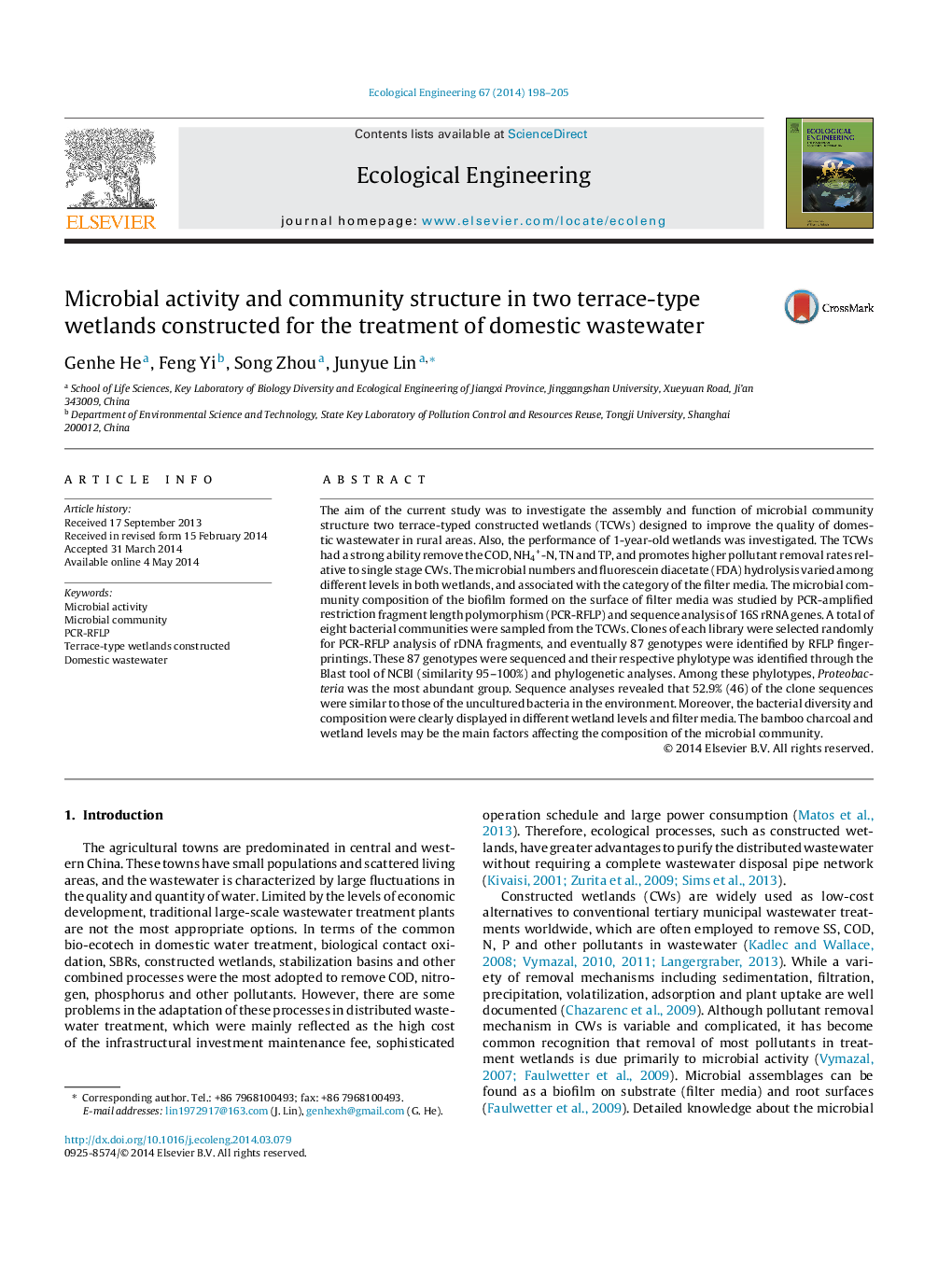| کد مقاله | کد نشریه | سال انتشار | مقاله انگلیسی | نسخه تمام متن |
|---|---|---|---|---|
| 4389431 | 1618032 | 2014 | 8 صفحه PDF | دانلود رایگان |
• Two terrace-typed constructed wetlands were designed.
• Bamboo charcoal (a local biomass resource) was used as a filter media.
• The structure and diversity of the microbial community were evaluated by PCR-RFLP of the 16S rDNA genes, and Proteobacteria was the most abundant group.
• The bamboo charcoal and wetland levels may be the main factors affecting the composition of the microbial community.
The aim of the current study was to investigate the assembly and function of microbial community structure two terrace-typed constructed wetlands (TCWs) designed to improve the quality of domestic wastewater in rural areas. Also, the performance of 1-year-old wetlands was investigated. The TCWs had a strong ability remove the COD, NH4+-N, TN and TP, and promotes higher pollutant removal rates relative to single stage CWs. The microbial numbers and fluorescein diacetate (FDA) hydrolysis varied among different levels in both wetlands, and associated with the category of the filter media. The microbial community composition of the biofilm formed on the surface of filter media was studied by PCR-amplified restriction fragment length polymorphism (PCR-RFLP) and sequence analysis of 16S rRNA genes. A total of eight bacterial communities were sampled from the TCWs. Clones of each library were selected randomly for PCR-RFLP analysis of rDNA fragments, and eventually 87 genotypes were identified by RFLP fingerprintings. These 87 genotypes were sequenced and their respective phylotype was identified through the Blast tool of NCBI (similarity 95–100%) and phylogenetic analyses. Among these phylotypes, Proteobacteria was the most abundant group. Sequence analyses revealed that 52.9% (46) of the clone sequences were similar to those of the uncultured bacteria in the environment. Moreover, the bacterial diversity and composition were clearly displayed in different wetland levels and filter media. The bamboo charcoal and wetland levels may be the main factors affecting the composition of the microbial community.
Across all tested samples, we obtained 46 (52.9%) sequences, which were similar to the uncultured bacteria in all 87 sequences, suggesting that many of the potential species were present in the water-treated columns and that a higher proportion of these species were observed in upper-level and bamboo charcoal media samples. Proteobacteria were the typical predominant groups. To visualize the phylogenetic relationships among these species, a dendrogram was constructed based on the sequences of the 16S rRNA genes of the classified bacteria, with a high similarity of 97–100%.Figure optionsDownload as PowerPoint slide
Journal: Ecological Engineering - Volume 67, June 2014, Pages 198–205
